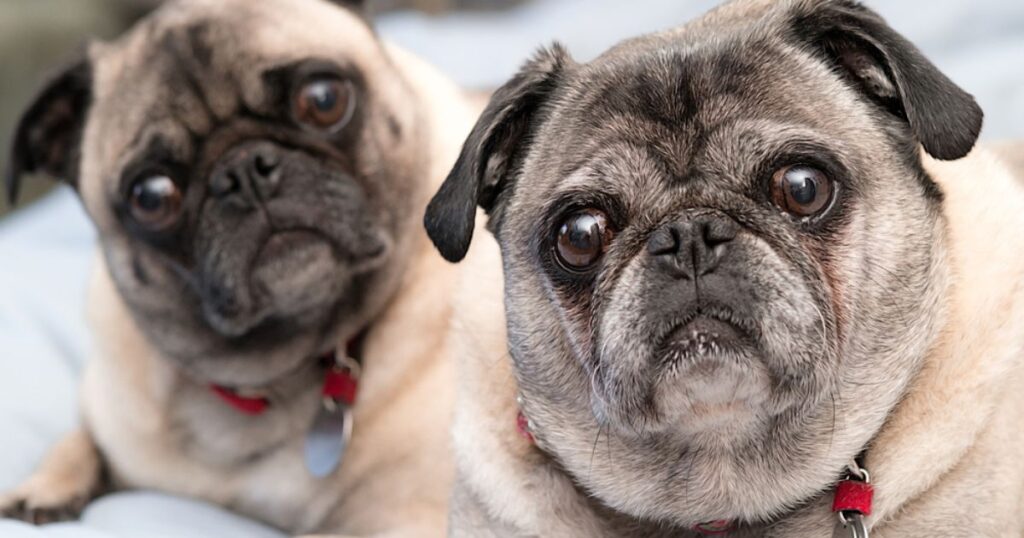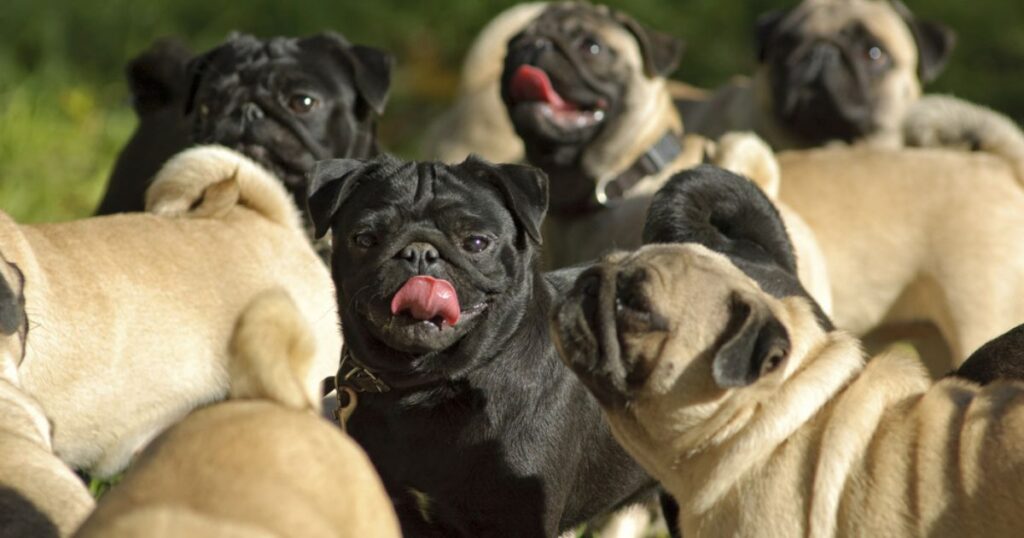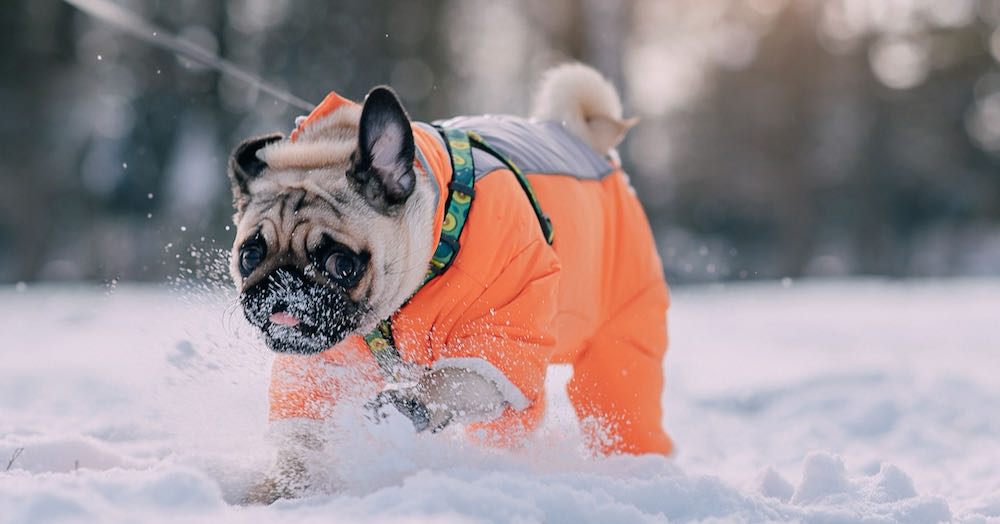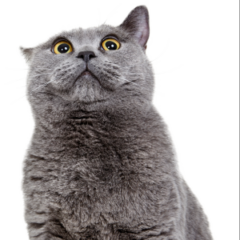- Pumpkin Team
- Jun 3
- 6 min read
Updated: Nov 5
Key Points
Pugs are an ancient breed with a rich history dating back over 2,000 years.
They are affectionately called “shadows” as they’re known for always wanting to stay by your side.
The average Pug lifespan is between 12-15 years with proper care.
Pugs are undeniably one of the most beloved and recognizable dog breeds. With their little wrinkled faces, curly tails, and comical charm, they’ve worked their way into the hearts of many pet parents and turned them into Pug fanatics.
Out of a total of 201 dog breeds, the Pug was the 38th most registered breed with the American Kennel Club in 2024, making this a small but mighty breed. Historically, they have ranged between the 20th and 40th most popular breed. Before bringing a four-legged family member into your home, here are 15 facts to help you make this all-important decision — or just fall a little more in love with this quirky breed.
1. A lap dog with a long history
Pugs are an ancient breed, with a history that dates back over 2,000 years. Originally bred to be companions to Chinese royalty, pugs eventually made their way to Europe, where they became staples among the noble and wealthy classes. Their regal roots are still evident in their confident and playful personalities today.
2. Pugs are known for their wrinkles

Pugs are famously wrinkly, but do you know why? The original Pug breeders in China prized wrinkles that resembled the Chinese character for “prince,” a symbol of good fortune and royalty. The soft folds of their skin remain one of their most endearing traits to this day.
3. A breed so popular they have their own motto
How many breeds of dog do you know with their very own motto? The Pug’s motto is “Multum in Parvo,” which means “A lot in a little” in Latin. It’s the perfect description for little guys with larger-than-life personalities.
4. Pugs are masters of the puppy dog eyes

Eye contact is important between dogs and their humans to build bonds, and Pug’s eyes dominate their little faces. Humans associate big eyes with cuteness, and with their eyes front and center, it will be hard not to fall in love with your new pug companion.
Research even tells us that dogs have developed muscles in the lower corners of their inner eyes to become more expressive in communicating with humans. You don’t stand a chance of saying no to this adorable stare.
5. They can thrive in just about any living space
Pugs are incredibly adaptable to various lifestyles, making them ideal companions for a wide range of households. Whether living in a bustling city apartment or a quiet suburban home, pugs adjust well to their environment.
Their compact size and moderate energy levels mean they don’t require large spaces or excessive exercise. Pugs enjoy lounging indoors or playing with their owners, and they thrive as long as they’re surrounded by love and affection.
6. How long do Pugs live?
The Pug life expectancy is between 12-15 years with proper care, though every dog is unique. A balanced diet, regular exercise, and routine veterinary checkups can help a Pug live a long and healthy life. Good preventative care lets you identify potential issues early, giving your pug the best possible chance of enjoying their golden years.
7. Pugs have a labrador-sized appetite
Pugs love their food, and they aren’t usually picky eaters like many other smaller breeds. They’re prone to overeating, so it’s important to manage their portions carefully to prevent obesity. No matter how difficult, sometimes you will need to say no to those puppy dog eyes.
8. The origins of this pint-sized breed

They might be one of the friendliest and most lovable dog breeds, but Pugs are thought to originate from Mastiff breeds. It’s hard to believe these class clowns might be pocket-size Mastiffs, but they really could be a big dog in a little body.
They’re also closely related to the Pekingese and the now-extinct Lo-sze dog, two other breeds that were bred to be loyal companion dogs in ancient China.
9. Pugs are the largest toy breed
Despite being classified as a toy breed, Pugs stand out as the largest in this category. Their sturdy, muscular build and compact size give them a unique presence among smaller dogs.
Weighing between 14-18 pounds on average, the Pug’s size and weight is on the heavier side but still just small enough to fit into the toy classification. The mix of size and personality makes Pugs a great choice for both families and individuals alike. Even big dog fans are bound to fall for their comical charm.
10. Fair weather dogs
Some dogs prefer the cold, and some prefer the heat, while Pugs remain firmly in the middle of the road. It’s not uncommon for Pugs to tiptoe around puddles and curl up under a blanket on the coldest of days. Of course, as a brachycephalic dog breed, too much heat isn’t good for them either.
Pro Tip: On hot days, flat-faced breeds may have a harder time catching their breath, so while a Pug may love to sunbathe, you have to be careful to avoid heat exhaustion.
11. What do you call a group of Pugs?

A group of Pugs is affectionately called a “grumble”, a term that perfectly captures their expressive, fun personalities. The cute collective name perfectly suits the breed’s vocal nature as you’re far more likely to hear them grumble than bark. Seeing a grumble of Pugs at a meet-up is enough to make anyone’s day — unless you’re made of stone.
12. How much does a pug cost?
Pugs will typically cost between $800 and $2,000 from a reputable breeder. Prices will vary depending on the breeder’s location and the lineage of the individual dog. Getting a puppy isn’t your only option, though, as rescues will often have Pugs and Pug crossbreeds available for adoption.
The cost of adopting a Pug is usually just a few hundred dollars. When you adopt a puppy it's important to ask if they will come neutered, vaccinated, and microchipped.
13. The Pug personality: Extroverted lovebugs

Pugs are known for their affectionate and playful personalities. They thrive on human companionship and form strong bonds with their families. Friendly and sociable, pugs get along well with children and other pets. Their love for attention and happy-go-lucky nature makes them perfectly suited for social butterflies who want a dog to take with them everywhere.
14. Why are pugs so popular?
Pugs gained massive popularity thanks in part to their associations with celebrities and pop culture. Stars like Jessica Alba and Paris Hilton are very vocal about their love of the breed. Pug influencers like Doug the Pug and Vito the Pug have also taken social media by storm. Their silly antics, relatable Pug memes, and stylish outfits have garnered millions of followers.
15. Sensitive and stubborn by nature
Pugs are known for being sensitive to their owner’s emotions, often providing comfort when you need it most. However, they also have a stubborn streak. Training them requires patience and positive reinforcement, but their loyalty and humor make it well worth the effort.
Is a Pug the right dog breed for you?
Pugs are a low-maintenance breed that thrive in a variety of different homes, from busy family households to single people in an apartment who want a cuddle buddy. They love their people so much that they can be prone to developing separation anxiety, so get training early or consider a more independent breed if you’re not looking to gain a second shadow.
With good care and lots of love, the average lifespan of a Pug could reach 15 years, so if you’re thinking of taking on this charming breed, you’ll want to think long-term. Pumpkin Dog Insurance plans can help with unexpected accidents and illnesses in the future, helping you say yes to the best possible care.
FAQs
Are Pugs hypoallergenic?
Pugs are not hypoallergenic, unfortunately. They have double coats, which are usually more associated with working breeds. A double coat allows dogs to stay warm in all weather, but for a flat-faced couch potato like a Pug, you can expect a fair amount of shedding.
Do Pugs eyes fall out?
Unfortunately, this can sometimes happen. Proptosis, or eye displacement, is possible with flat-faced dogs with short noses because the placement of the eyes makes them more at risk of trauma. If you’re concerned about this potential health problem, talk to your veterinarian.
Do Pugs bark a lot?
Pugs are not known for being excessive barkers. They may sometimes bark when they’re excited or if they want to alert their guardian to danger (or a nearby mailman), but for the most part, they’re usually quieter than many other breeds. You’re more likely to be kept awake by their snoring than their barking.
How much exercise does a Pug need?
You don’t have to run marathons to keep a Pug happy. In fact, as brachycephalic pups, too much exercise can be dangerous for pugs. In general, 30 minutes to an hour of walking a day is enough to have them snoozing happily on the couch.

